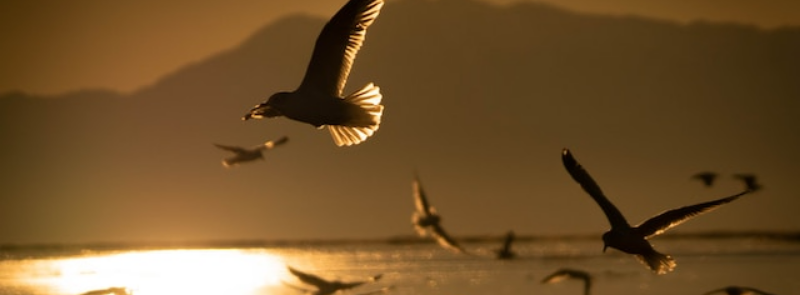
When It Occurs
Annually Second Saturday in May
Official Website
Timeline
Days Passed (926)
# Hashtags
#WorldMigratoryBirdDay #WMBD
World Migratory Bird Day (WMBD) is an annual campaign dedicated to raising awareness about the imperative need for the preservation of migratory birds and their habitats. With a global reach, WMBD serves as a powerful tool to foster worldwide understanding of the challenges faced by migratory birds, their ecological significance, and the essentiality of international collaboration for their conservation.
Each year, individuals across the globe take initiative by organizing public events such as bird festivals, educational programs, exhibitions, and bird-watching excursions to commemorate WMBD. Although these activities can occur at any time throughout the year due to different countries or regions experiencing peak migrations at varying times, the primary international celebrations take place on the second Saturday in May and in October.
Established By: The Secretariat of the Agreement on the Conservation of African-Eurasian Migratory Waterbirds (AEWA) and the Convention on the Conservation of Migratory Species of Wild Animals (CMS)
First Observed: 2006
Purpose: To raise awareness about the need to conserve migratory birds and their habitats, and to highlight the importance of international cooperation in protecting these species.
Background
World Migratory Bird Day (WMBD) was established to draw attention to the threats faced by migratory birds, their ecological importance, and the need for international efforts to conserve them. The day is a global campaign aimed at promoting the conservation of migratory birds and their habitats.
Significance of Migratory Birds
- Ecological Importance: Migratory birds play critical roles in ecosystems, such as controlling insect populations, pollinating plants, and dispersing seeds.
- Indicators of Environmental Health: The status of migratory bird populations can serve as indicators of the overall health of the environment.
- Biodiversity: Migratory birds contribute to global biodiversity and are a key part of many cultures and economies through birdwatching and tourism.
Objectives of World Migratory Bird Day
- Raise Awareness: Increase public awareness about the threats faced by migratory birds and the need for their conservation.
- Promote International Cooperation: Highlight the importance of international cooperation in protecting migratory birds, which traverse multiple countries and continents.
- Engage Communities: Encourage local and global communities to engage in bird conservation activities and habitat preservation.
- Support Conservation Policies: Advocate for the implementation of effective conservation policies and measures to protect migratory birds and their habitats.
Themes and Focus Areas
Each year, WMBD has a specific theme to address different aspects of migratory bird conservation. Past themes have included:
- 2019: "Protect Birds: Be the Solution to Plastic Pollution!"
- 2020: "Birds Connect Our World"
- 2021: "Sing, Fly, Soar – Like a Bird!"
- 2022: "Dim the Lights for Birds at Night!"
Celebrations and Activities
Educational Campaigns: Educational programs and campaigns are organized to teach people about migratory birds, their migration patterns, and the challenges they face. These may include workshops, presentations, and interactive activities.
Birdwatching Events: Birdwatching excursions and events are held to engage the public in observing and appreciating migratory birds in their natural habitats.
Community Involvement: Local communities participate in activities such as habitat restoration projects, tree planting, and clean-up campaigns to create safer environments for migratory birds.
Art and Cultural Events: Art exhibitions, photography contests, and cultural performances are organized to celebrate the beauty and importance of migratory birds. These events often involve local artists and communities.
Scientific Conferences: Conferences and symposiums are held to discuss research findings, share knowledge, and develop strategies for the conservation of migratory birds.
Advocacy and Policy Engagement: Conservation organizations and activists use the day to advocate for stronger legal protections for migratory birds and their habitats. This may include lobbying for policy changes, launching petitions, and raising public awareness about conservation issues.
Media Outreach: Media campaigns and social media activities help spread the message of migratory bird conservation to a broader audience. Hashtags like #WorldMigratoryBirdDay are used to promote the event online.
Global Coordination: International cooperation is emphasized through joint activities and campaigns organized by different countries and organizations, highlighting the need for a unified approach to conservation.
Importance of World Migratory Bird Day
- Conservation Awareness: The day helps raise global awareness about the critical need to protect migratory birds and their habitats.
- Promotes Action: It encourages individuals, communities, and governments to take concrete actions to conserve migratory birds.
- International Cooperation: The observance underscores the importance of international cooperation in addressing the conservation needs of migratory birds.
- Cultural and Economic Value: By promoting birdwatching and ecotourism, WMBD highlights the cultural and economic benefits of conserving migratory birds.
- Scientific Advancement: The day supports the sharing of scientific knowledge and research findings, which are crucial for developing effective conservation strategies.
Conclusion
World Migratory Bird Day is a vital global observance dedicated to the conservation of migratory birds and their habitats. Through a variety of educational campaigns, community activities, scientific conferences, and advocacy efforts, the day aims to raise awareness, promote action, and foster international cooperation to protect these important species. By participating in WMBD, individuals and organizations can contribute to the global effort to ensure the survival and well-being of migratory birds.


